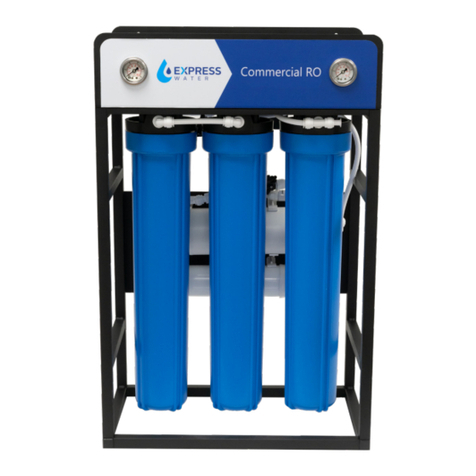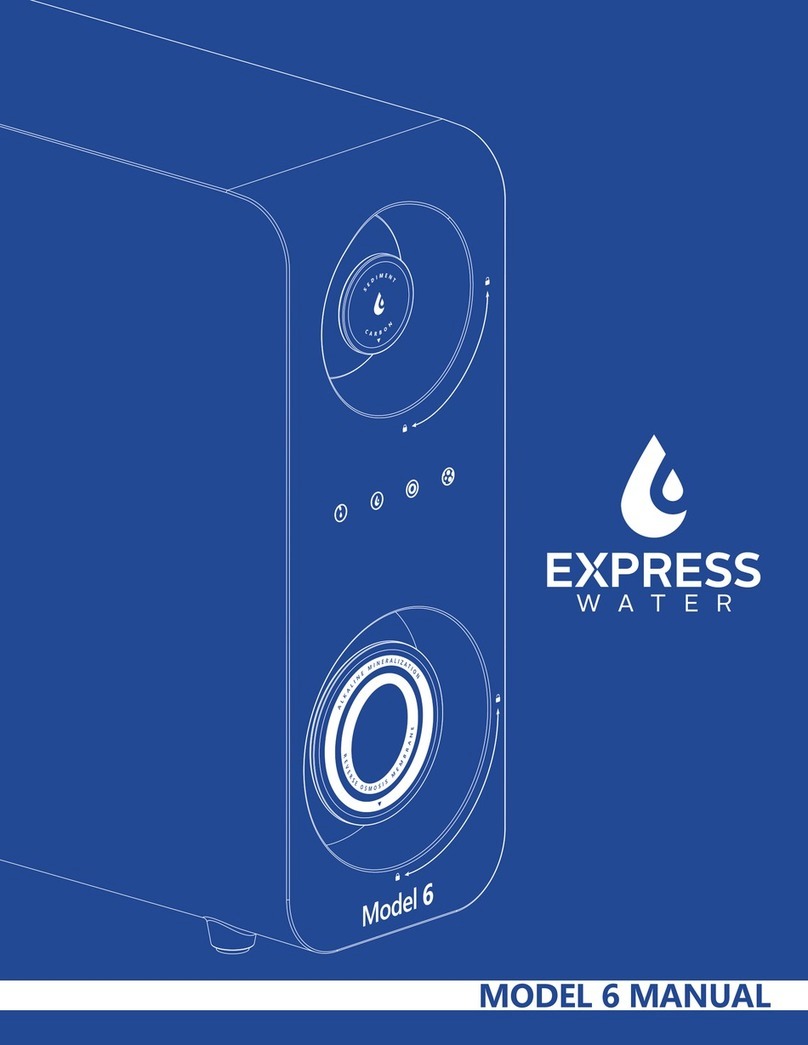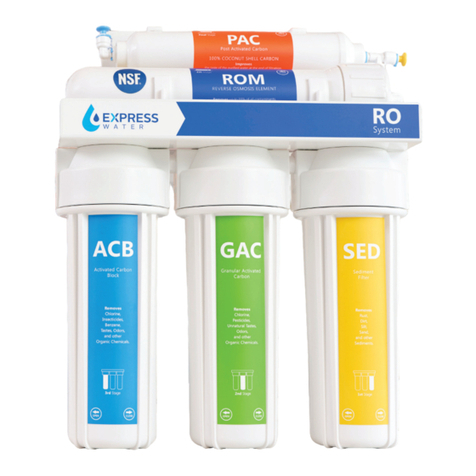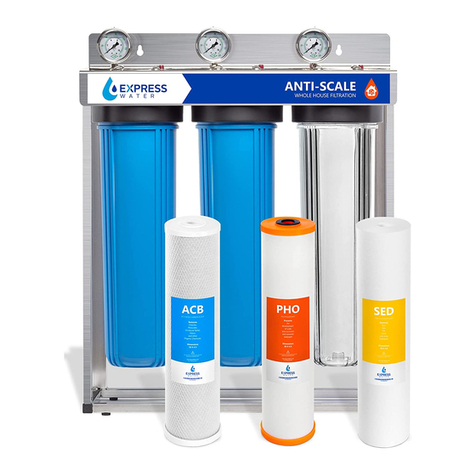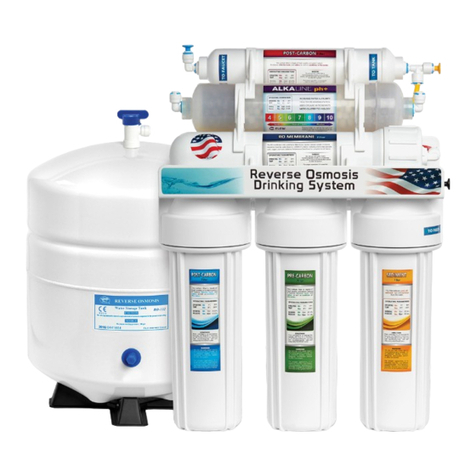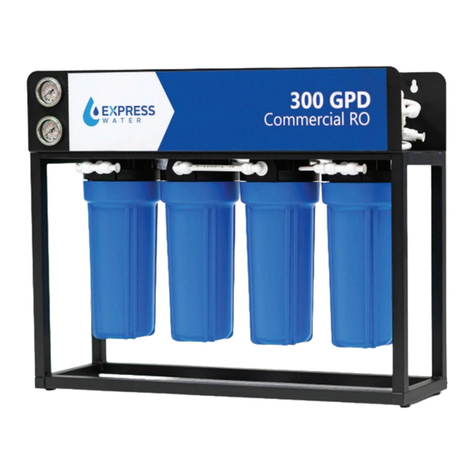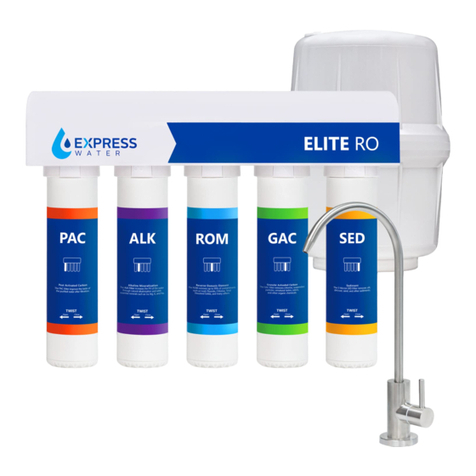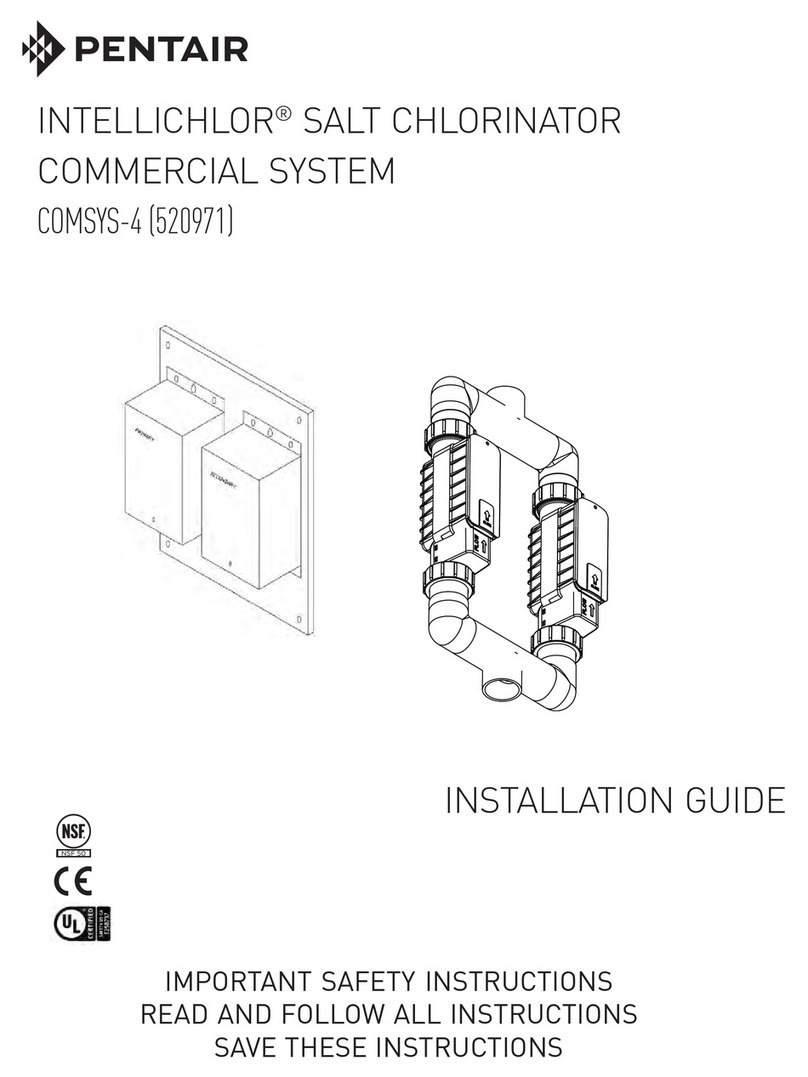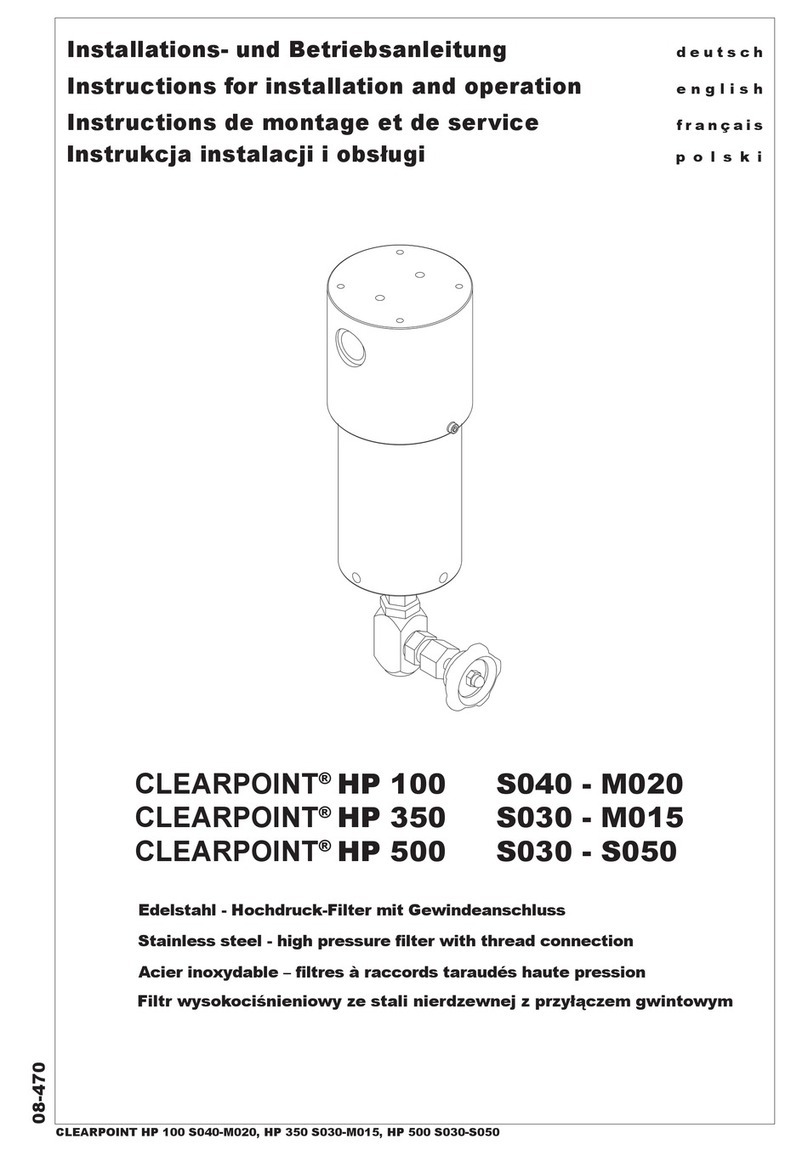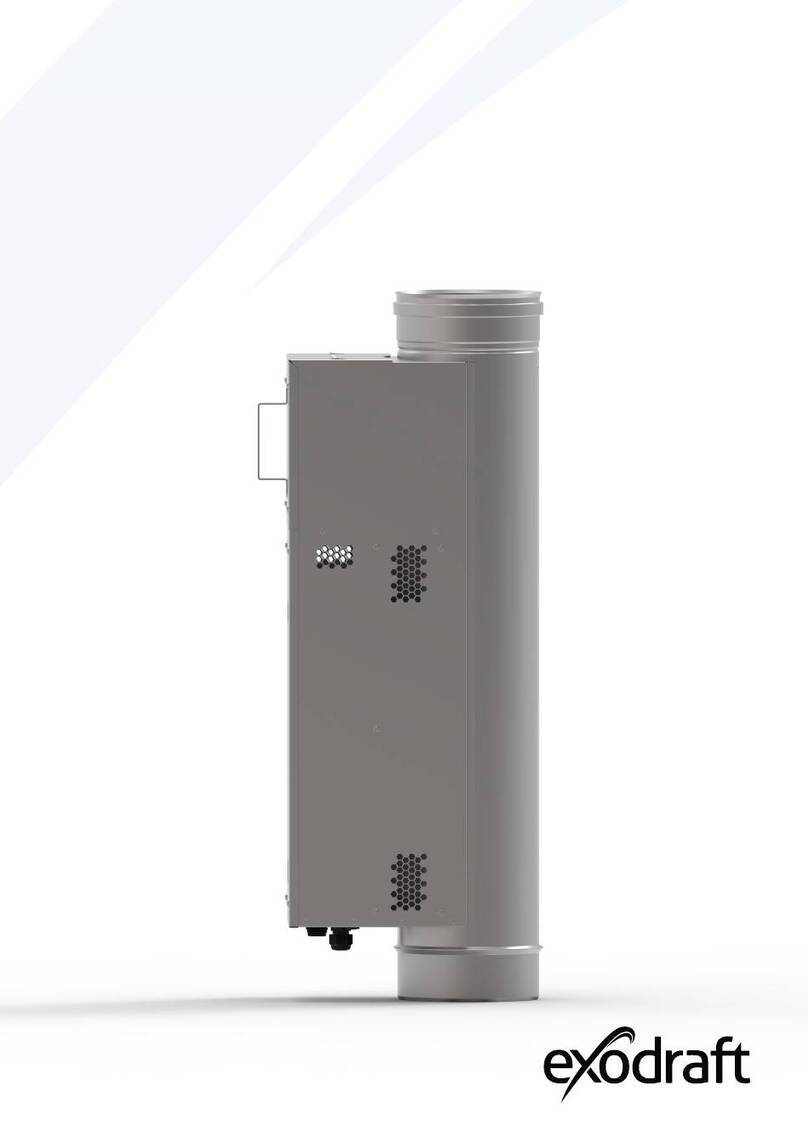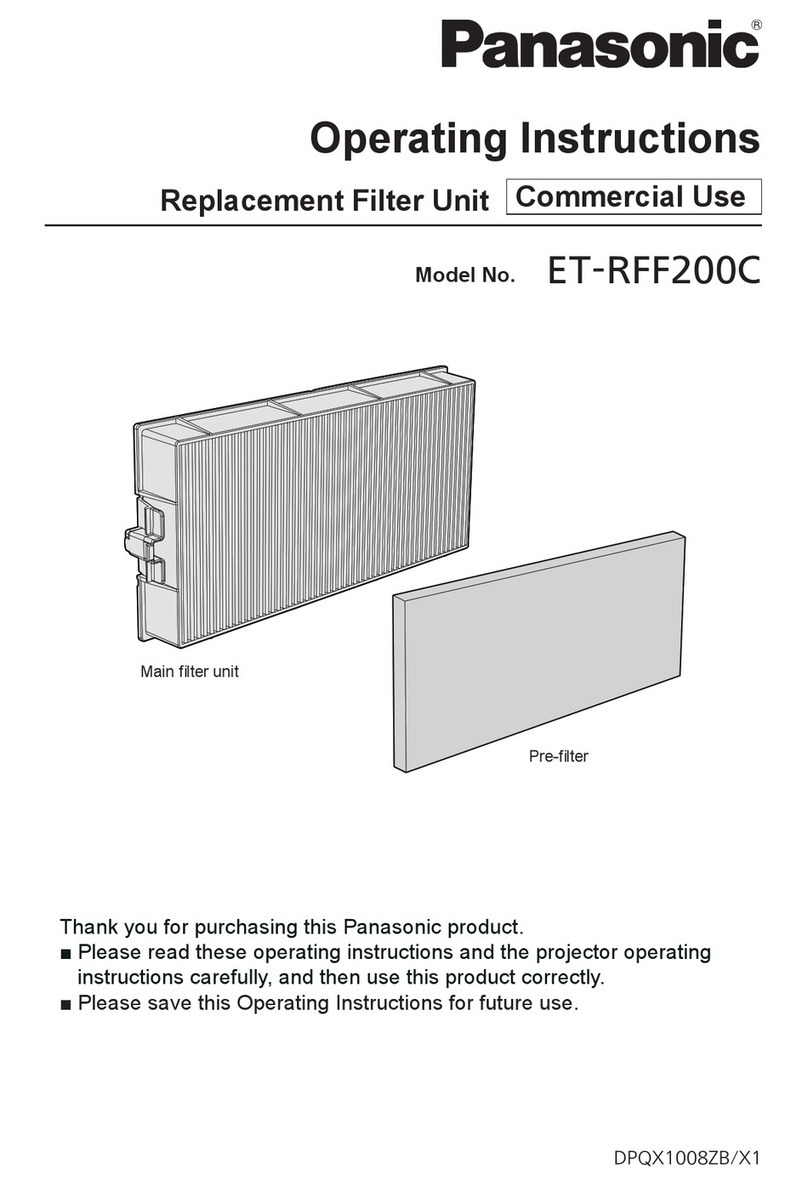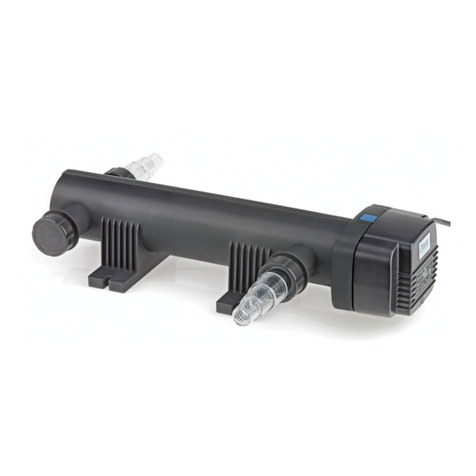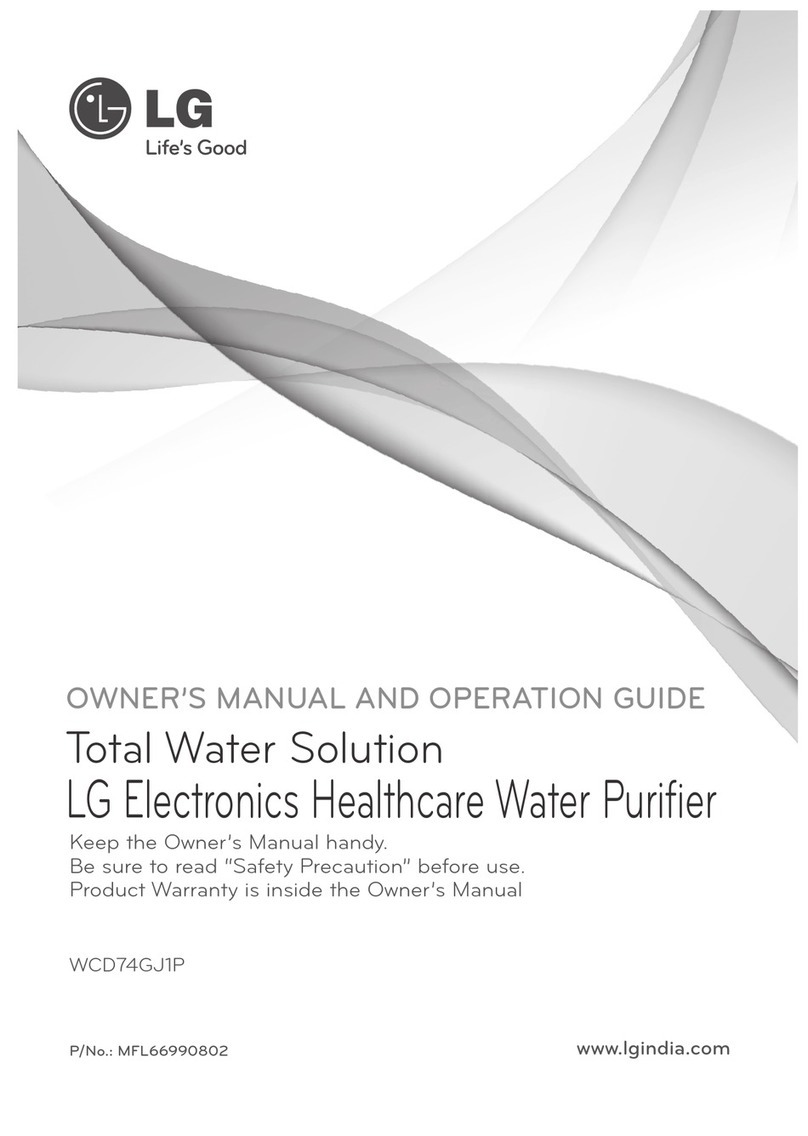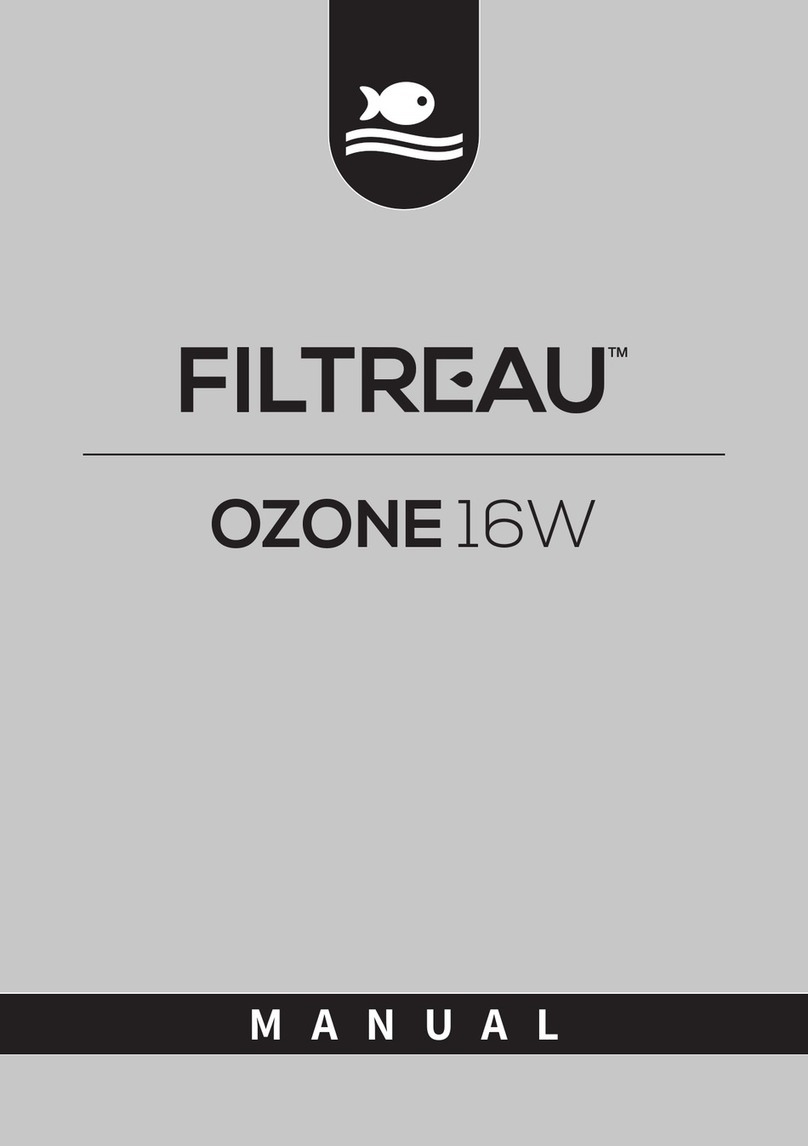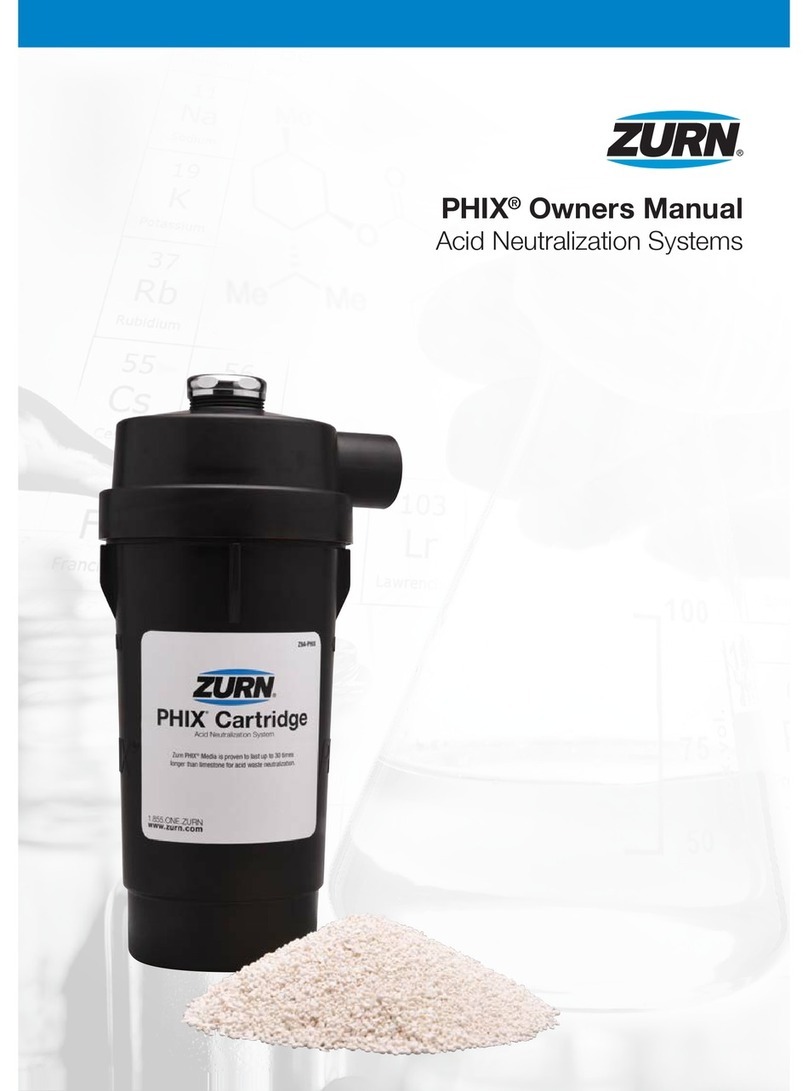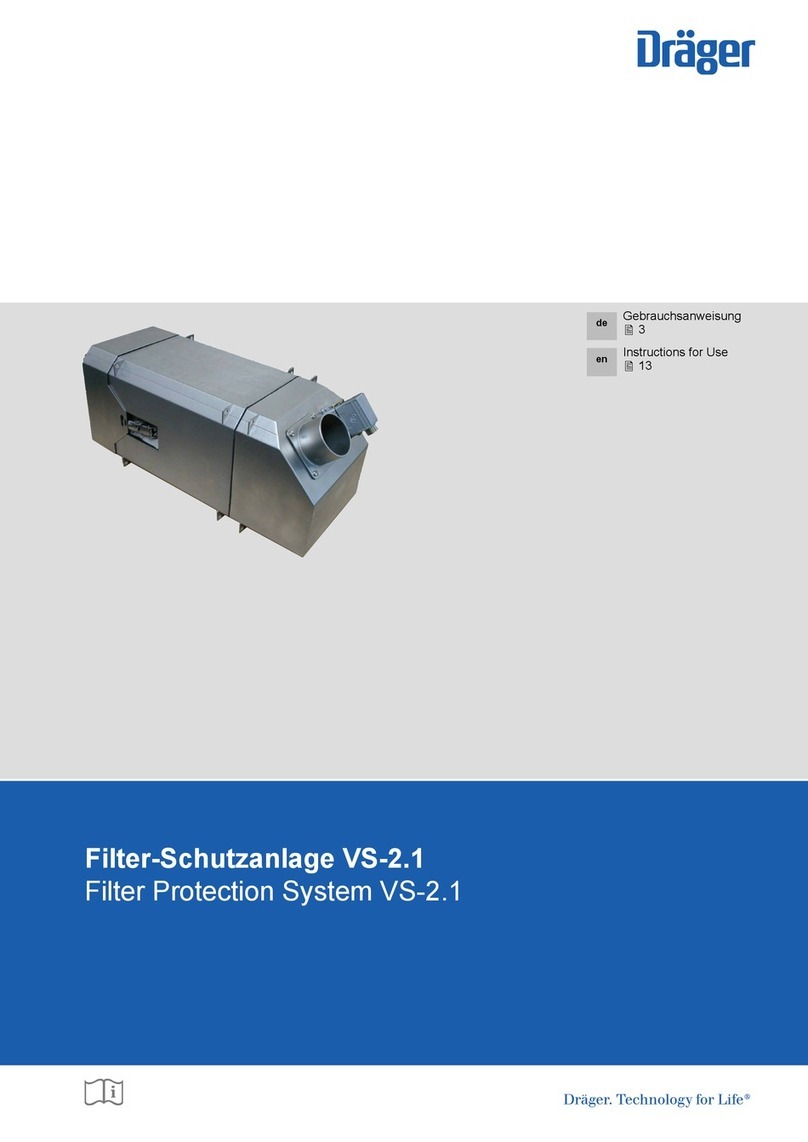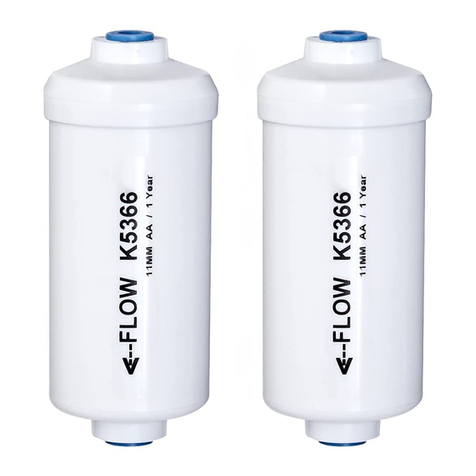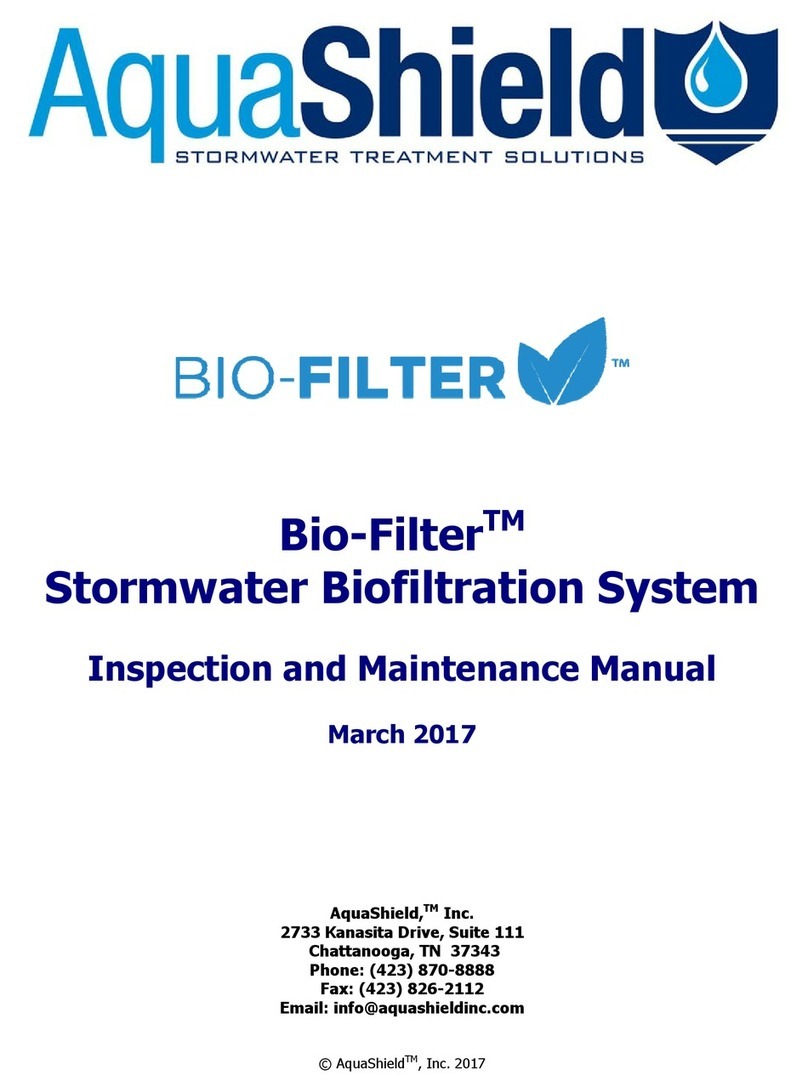
16 17
How to Change the RO Membrane
(Recommended about once a year)
NOTE! Make sure water ow to the system is o
1. Remove the 3 stem elbows attached to the Reverse
Osmosis Membrane Housing. For detailed directions of
disconnecting these refer to the Quick Connect Guide
(Page 12)
2. Unscrew the cap from the Membrane Housing and remove the Membrane inside, be sure to note the
correct orientation of the membrane
3. Wash out the RO Membrane Housing
Mix ½ gallon of water with 1 tbsp of household bleach
Note: Do not add bleach directly to the membrane housing
Scrub the inside of the membrane housing with the bleach mixture
Rinse the housing until all traces of bleach are gone as bleach will damage your membrane
4. Install the new RO Membrane in the Housing in the correct direction you noted earlier (the single large
rubber ring will face towards the cap). Make sure to push the Membrane in rmly and check to see if the
o-ring is in place. Then close the Housing by tightening the cap with your hand.
5. Now reattach the stem elbows to the RO Membrane Housing. If this is the only/last lter you are changing
begin the “System Startup” instructions on Page 14.
Make sure the O-Ring is in place
before you tighten the Membrane
Housing Cap
Filter and RO Membrane Storage
- Store unopened lters in an airtight container to prevent them from absorbing air. This prolongs the shelf
life of the lters and avoids any possible odors or contamination from the air.
- Using this method it is okay to store lters for several years. Store in a cool, dry, dark place (avoid heat and
moisture contamination).
Troubleshooting
FAQ’s
Does this syem lter Fluoride, Lead, Pharmaceuticals, and Arsenic?
Yes, as well as Cyanide, Phosphate, Peicides, Sodium, Cadmium, Sulfates, and many other contaminants
up to certain levels. You may need other changes to media for high levels of these subances.
What PSI do I need? What is the operating pressure?
The minimum PSI for the syem is 45 and the maximum PSI is 80. If your PSI is too high you can purchase
a Pressure Regulator to reduce your pressure to acceptable levels. Let us walk you through these options;
call us at 1-800-992-8876 Monday - Friday 10am - 5pm PST or visit expresswater.com
Does this unit soften water?
Your RO Syem will soften water. However, hard water does reduce the lifespan of your lters.
What is the discharge rate?
The typical discharge range is one to three gallons for every one gallon produced. Your water pressure,
incoming water quality, and water temperature will aect your RO Syem’s discharge rate.
How often do I change Filters? Is there an indicator?
The Sediment, GAC, and PAC Filters should be changed every 6 months. The RO Membrane should be
changed every one year at the same time as the second change of the 6 month lters. There is no direct
indicator for lter changes. However, if you notice a drop in water quality before the 6 months or 1 year
mark this may mean that due to your water quality your lter has degraded. If you reach 6 months or 1
year without noticing a change in tae you should ill change your lter at this point as they are no longer
viable.
Can I add additional lters to my current syem?
Yes, each syem is fully upgradeable. Check the Upgrades and Accessories section at ExpressWater.com
for more information.
Can I reuse discharge water?
Never consume discharge water. With proper inallation it is possible to utilize your discharge water.
Contact Express Water to speak with a qualied representative who can give you more information based
on your situation.
How long does the syem la?
With proper maintenance and average water quality an RO Syem should la 5-10 years.
Does this produce aquarium safe water?
While the water is perfectly safe for human consumption, we sugge inalling our Deionization Filter
Upgrade to create water for aquatic life.
Why do I need to ush the syem?
New lters (or lters that have experienced extended disuse) can develop carbon residue. Two hours of
conant ow is recommended to release any extra carbon before the water is safe to drink.











